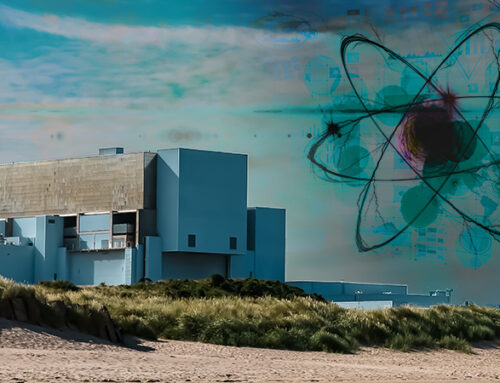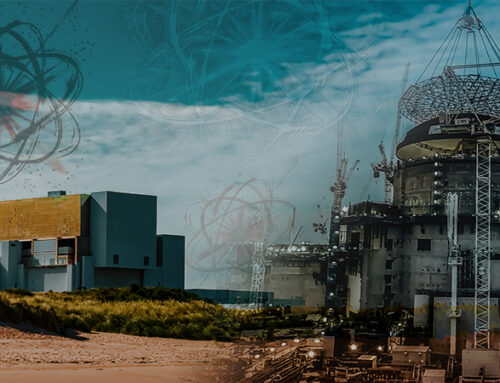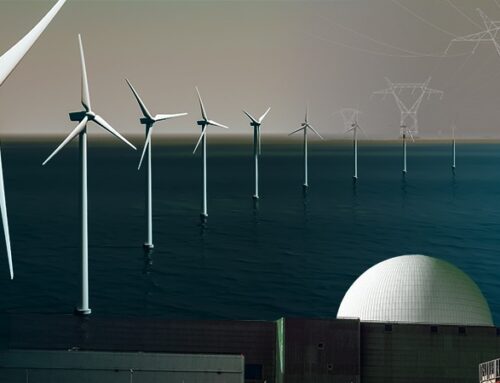Last week the world’s first European Pressurised Water Reactor (“EPR”) came online at Taishan in China, 18 years after the first planned EPR at Olkiluoto in Finland made its first licence application. Construction on the third generation nuclear plant at Taishan began in 2009 and was initially expected to open in 2013, however in common with the plants in Finland and the flagship EPR at Flamanville in France, the project has suffered delays and cost overruns.
The first nuclear reactions at Taishan 1 took place in June, with grid connection tests being completed at the end of the month. There will now be various power-up tests before the plant is trialled at full power for longer periods. The following day, a second new pressurised water reactor, the AP1000 was also connected to the grid for the first time.
The new reactor at Hinkley Point is also an EPR, and further similar reactors are planned for Sizewell C and Bradwell B.
The first grid connection of an EPR must come as a great relief to French nuclear manufacturer, Framatome. The company split from Areva in 2014 and was taken over by EDF, largely as a result of financial pressures arising from the EPR project.
“We are now focused on supporting our client in the start of commercial operation of unit 1. We also remain fully engaged in the completion and start-up of Taishan 2, Flamanville 3 and Olkiluoto 3, and in the delivery of Hinkley Point C in the United Kingdom. All current and future EPR projects will also benefit from the broad experience acquired by our teams,”
– Bernard Fontana, CEO, Framatome
The problems first emerged at Olkiluoto in Finland. A consortium of Areva and Siemens began construction of Olkiluoto 3 in 2005 under a turnkey contract signed with Finnish utility Teollisuuden Voima Oyj (“TVO”) in late 2003, with an expected completion date in 2009. At the time of signing, the cost of the new unit was set at €3.2 billion, but the company now estimates its total investment to be around €5.5 billion. After delays and cost overruns, TVO began legal action against its suppliers, which culminated in an agreement in March, with Areva and Siemens agreeing to ensure that the funds dedicated to the completion of the project will be adequate and cover all the guarantee periods, in addition to paying €450 million in compensation to TVO.
The supplier consortium companies are entitled to receive an “incentive payment” of up to €150 million upon “timely completion” of the project, however, if they fail to deliver the plant by the end of 2019, they will pay a penalty to TVO, whose amount will depend on the extent of the delay, but will be limited to €400 million.
Multiple problems and delays have also plagued the flagship project at Flamanville. There have been persistent issues with the quality of the welding at the site, with the French nuclear regulator, Autorité de Sûreté Nucléaire (“ASN”) identifying deficient welds in 2008, 2010 and 2018, in addition to the discovery in 2015 that the steel used to construct the pressure vessel contained excess levels of carbon. This was found to be a systemic problem, with production at the Areva-owned Le Creusot forge, which had been covered up with fraudulent documentation. Although the ASN has decided that the bottom section of the Flamanville pressure vessel is acceptable for use, albeit with additional monitoring, the containment lid will need to be replaced no later than the end of 2024 (as the manufacturing process for a containment lid is around seven years).
It is unclear what effect the most recent welding issues will have, but they are likely to add a further delay of a few months to the 2019 expected commissioning date. The cost of the project was re-assessed in 2015 to €10.5 billion – three times the original estimate – however it is likely that the final cost will be even higher.
The news that an EPR has successfully maintained a nuclear reaction and been connected to the electricity grid is positive news for Hinkley Point C, but there is still a long way to go before the project is delivered and delays and cost increases have already been announced. I wouldn’t be willing to bet that the EPR at Hinkley Point will open before the planned Advanced Boiling Water Reactor at Wylfa Newydd that has recently secured support from the UK government, even though the exact support arrangements have not yet been agreed.







I wouldn’t be willing to bet that the EPR at Hinkley Point will open before…Wylfa Newydd…
I suspect this statement says more in a negative way about HP C than positive about Wylfa B.
However, if recent rumours
http://realfeed-intariffs.blogspot.com/2018/11/how-greg-clarks-hitachi-deal-could-lead.html
turn out to be well-founded, that in order to reduce the apparent subsidy required from electricity customers the UK gov’t is to take a direct stake in the project by assuming liability for cost overruns, that will effectively make the project a variant of the ‘cost-plus’ contracts popular in the defence industry over the decades. The best way for the contractor to maximise profits on such projects is to maximise the cost overruns, which are easiest done by maximising delays in the completion date, as the large workforce needs to be kept on the payroll for the extended duration.
In which case, I’d bet on Wylfa B commissioning after HPC – if ever.
The problem with the blog is that the projects it mentions include the EPR projects which have been disastrous…the ABWRs built in Japan were delivered on time and on budget because the technology is less of a step forward than the EPR. Absent gaming the contract, Wylfa B should be a better deal than HPC…